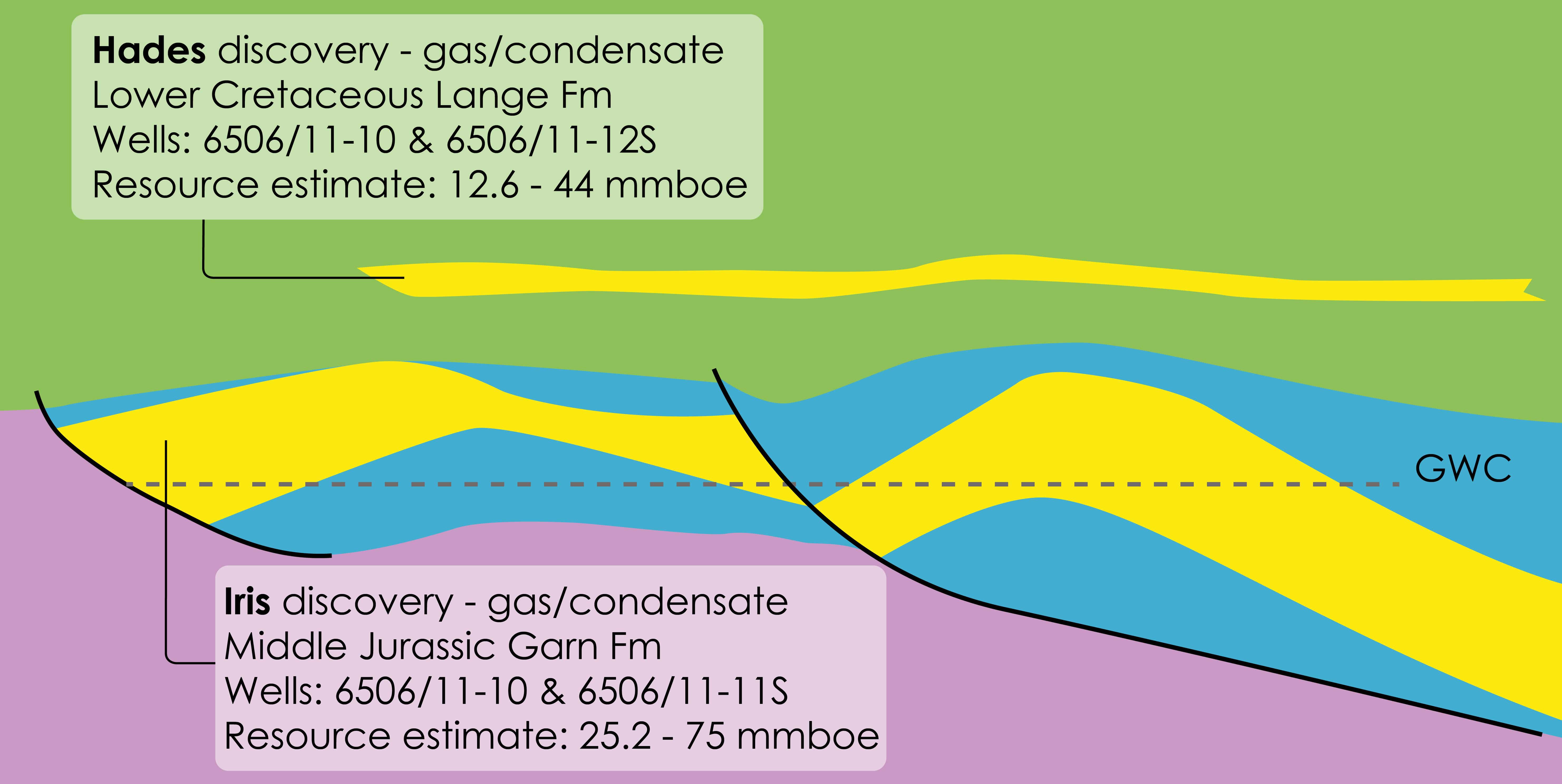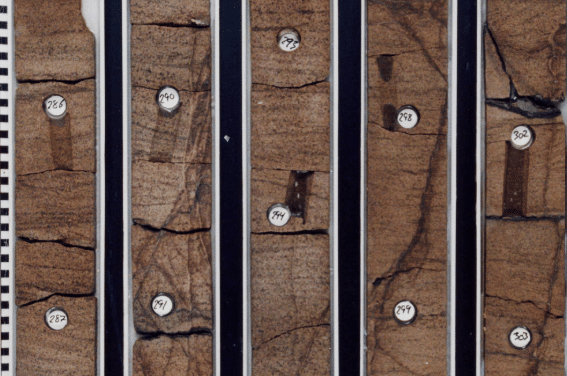In an attempt to further proof initial resource estimates of 19-144 mmboe, the second well drilled on the Norwegian Sea Hades discovery in PL 644 has now reduced the estimated resource of gas/condensate to 13 – 44 mmboe.
(The well did not drill into the Iris discovery. Compare map below.)
The objective of the well was to delimit the gas/condensate discovery in the Lange Formation toward the southwest, reduce uncertainty associated with the resource estimate, and to conduct a formation test.
The well encountered an interpreted gas column of about eight metres in the Lange Formation, with sandstone layers totalling about 83 meters with variable reservoir properties from poor to moderate, according to NPD.
The Hades reservoir (geoexpro.com: “A discovery from the underworld“) is thought to be a deepwater channel sandstone that exhibits a combination of stratigraphic and structural trapping.
Biggest find in 2018
The Hades discovery was made in 2018 when well 6506/11-10 proved gas and condensate in a good quality sandstone of the Lower Cretaceous Lange Formation.
The same well also demonstrated gas/condensate in the Middle Jurassic Garn Formation (Iris discovery). That one was appraised with 6506/11-11 last fall.
Attend NCS Exploration Strategy 18-19 November in Stavanger to hear more about the Hades field and the OMV exploration strategy.
In 2018, following the initial discovery, the Hades and Iris discoveries combined were hailed as the biggest find of the year (geoexpro.com: “500 mmboe in 2018”) on the Norwegian Continental Shelf with a potential of 245 mmboe.
As is stands now, the combined resource estimate of 120 mmboe is about half of this.

The second well drilled after the 6506/11-10 Hades/Iris discovery was 6506/11-11S (geoexpro.com: “OMV confirms gas discovery“). Although the NPD states that this well only targeted the Iris discovery, it is slightly surprising that it did not aim to test the Hades reservoir too.
Iris downsized last year
The map shows that the 6506/11-11S well lies just outside the current Hades field extent, so it may be possible that the well unfortunately missed the Lower Cretaceous sands.
Based on the outcome of 6506/11-11S, the estimated recoverable resource for Iris was already adjusted from 19 – 132 to 25 – 76 mmboe.
The 6506/11-12-s has been drilled by OMV Norge AS (operator, 30%) and is partnered by Equinor (40%), DNO Norge (20%) and Spirit Energy (10%).
The nearby Morvin field (compare map) produces gas and oil from Jurassic sandstone in the Tilje, Tofte, Ile, Garn and Spekk Formations. The reservoirs lie in a rotated and tilted fault block at a depth of 4,500-4,700 metres. They have high pressure and high temperature (HPHT).
HENK KOMBRINK





